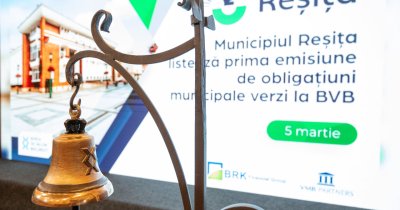This report features a series of eight myths debunked by gender experts and leaders, as well as a new self-help tool designed to help CEOs quickly assess the diversity programmes in their organisation and understand whether they have implemented the ‘six measures that work’ to accelerate gender equality.
While there are no one-size-fits-all solutions as each business has a unique corporate culture that calls for an arsenal of targeted solutions, all businesses share the need to adjust or compensate for an unequal social and professional playing field for women, upheld by socio-economic myths as well as cultural and unconscious biases.
Eight myths debunked by experts
- Myth n°1: “Women have no or less ambition”;
- Myth n°2: “Motherhood is not compatible with a leadership position”;
- Myth n°3: “The invisible woman” or “We can’t find competent female candidates in the talent pool”;
- Myth n°4: “Women are risk averse”;
- Myth n°5: “Part-time work is not compatible with leadership roles”;
- Myth n°6: “Gender inequalities are mainly found at the top of the corporate ladder”;
- Myth n°7: “There are men’s jobs”;
- Myth n°8: “Quotas are not based on merit and unfair to men, and risk pushing incompetent women into key positions”
”Given the slow pace of change, we wanted to understand the persistent myths that may be slowing down companies’ efforts to promote gender diversity”, explains Cécile Kossoff, Global Diversity and Inclusion Leader at Mazars Group.
”While there has been progress, notably in countries where quotas have been implemented, the pandemic has reinforced inequalities and confirmed that many gender stereotypes persist, which create barriers to women reaching the executive level”, comments Marie-Christine Mahéas, who co-coordinates the Observatory for Gender Balance, leads Mazars’ Centre for D&I and advises CEOs and executive committees on the topic.
College degrees: women vs. men
Today, women are more likely than men to enroll in and complete college, according to statistics. In Romania, during the 2019/2020 academic year, for the majority of educational units, the share of the school population had similar percentages for women and men.
The only exceptions were post-secondary non-tertiary educational units and tertiary educational units, where the majority of students were women, 69,3%, respectively 54,6%.
”Despite the notable increase in female enrollment in higher education over the last years, women still continue to disproportionately be underrepresented in leadership and high-paying positions. Furthermore, one of the reasons why women do not have access to leadership positions is that they are still the the main persons responsible when it comes to raising and educating children. By skipping time (months or even years) of their careers, most women are significantly less likely to be promoted and they experience a large divergence in their career paths following the decision to start a family. And even if we are talking about pursuing higher levels of education, like an EMBA for example, women still need to work harder than men to be able to graduate from this kind of program, as the age when such higher education is possible coincides with the age where women are prepared to become mothers and when traveling is not really possible for most.”, mentioned Ella Chilea, Audit Partner and Diversity & Inclusion Leader, Mazars România.
Hervé Hélias, CEO and Chairman at Mazars Group, says: „Beyond equality and fairness, this is a business concern. It is no longer possible to operate in a male vacuum. Diversity is a source of openness and better performance – it allows for richer exchanges, new visions, and less biased decisions. Today, it has become a general management issue, which must be addressed at the highest level.”
Women, pioneers in computer science
Romanian women are pioneers when it comes to participation in fields like computer science, math, or exact sciences, that have historically been controlled by men. Moreover, compared to other EU nations, Romanian women are more likely to earn degrees in engineering, technology, and manufacturing, and lead businesses within these domains.
As a matter of fact, in the last three years, Romania has seen an increase in the number of startups founded or co-founded by female entrepreneurs, taking into account many sectors, such as health, education, tourism, finance, tech or e-commerce.
When we look at the evolution of diversity across the world, we can see that we’ve come a long way. However, despite great progress, we still have a long journey ahead. In 2019, only 20% of board members worldwide were women.
Standing out as the most advanced country in this domain, France has reported 46% of women sitting on boards of directors since 2021, under the impetus of the Coppé-Zimmerman law. Improvements have been greatest in countries that have imposed binding quotas, including France, Italy, Germany, and Belgium.
Caroline de La Marnierre, Co-coordinator of the Observatory for Gender Balance, states: „According to the UN, the world's GDP could increase by 26% by closing the gaps between women and men in the labour market: so concrete solutions are urgent! In order to begin this journey, it is important to set precise and ambitious gender equality objectives at all levels, as to guide organisations internally on the subject.”
According to data released by Eurostat, Romania had one of the lowest unadjusted gender pay gaps in the European Union in 2020, at 2.4%. This means that in 2020, the average wage for women working in Romania was €97,6, compared to €100 for men.
In the EU, women earn 13% less than men despite having on average higher levels of education. There were variances in the unadjusted gender pay gap amongst the EU Member States, with Latvia, Estonia, Austria, and Germany showing the biggest discrepancies. On the other end of the spectrum, Luxembourg (0.7%), Romania (2.4%), Slovenia (3.1%), and Italy (4.2%) had the smallest differences.
The above data demonstrates that salary equality is not largely influenced by a country's level of income because there is a big disparity between member states.
”Breaking down these barriers will require an international shift in ideology and how diversity and inclusion is approached – the focus should be less on reinforcing female leadership skills and more on systemic changes to the work environment and business practices”, adds Cécile Kossoff.
Managing gender diversity
This concrete, educational and very practical checklist allows them to quickly assess the relevance of their gender diversity programmes, based on the six measures to accelerate gender diversity published by the Observatory.
”CEOs have to lead this from the top and be role models through the vocabulary they use, the appointments they make, their sponsorship of high-potential women, their refusal to participate in all-male panels and applying zero tolerance towards unacceptable behaviours. The regular inclusion of gender progression in the ExCom agenda is also a strong sign of commitment”, concludes Marie-Christine Mahéas.
 Oana Coșman
Oana Coșman












Any thoughts?